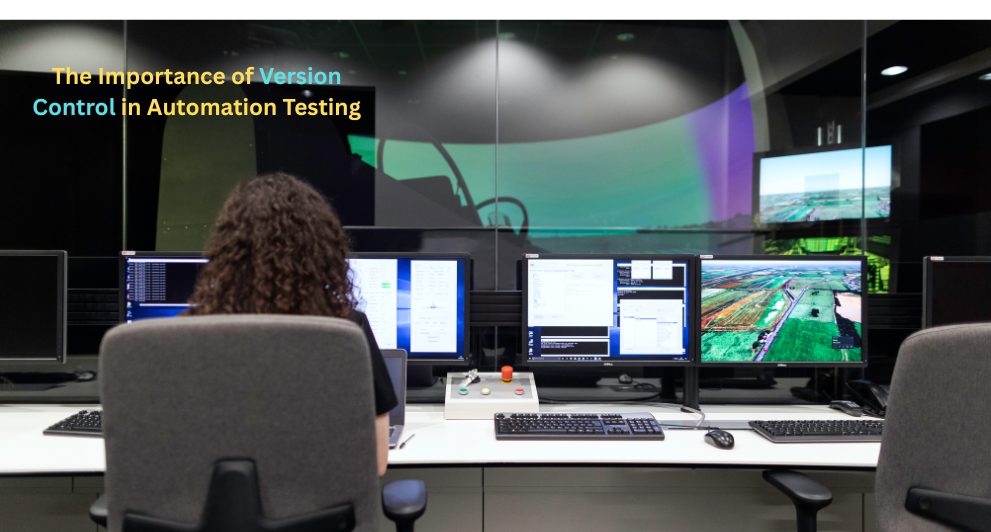Version control is a critical component of automation testing that ensures consistency, reliability, and collaboration across testing teams. As test scripts evolve and multiple testers work simultaneously, managing changes without a structured system can lead to confusion, errors, and lost productivity.
By implementing version control, teams can track every modification made to test cases, manage different versions of the test automation framework, and collaborate more efficiently. Whether you’re working in Agile, DevOps, or CI/CD environments, version control ensures that automation testing remains stable, maintainable, and scalable.
What is Version Control?
Version control is a system that records changes to files over time so that specific versions can be recalled later. It enables multiple developers or testers to work on a project simultaneously without overwriting each other’s contributions. It’s like having a time machine for your code, you can view history, compare changes, and revert to previous states when necessary.
Popular version control tools include:
- Git (most widely used)
- SVN
- Mercurial
Why Version Control is Essential in Automation Testing
1. Improved Collaboration
In automation testing, multiple testers often work on different parts of the test suite. Without a VCS, sharing scripts and updates becomes chaotic. With version control:
- Team members can work concurrently on the same codebase.
- Conflicts are identified and resolved systematically.
- Everyone has access to the latest version of the automation framework.
2. Change Tracking and Accountability
One of the key benefits of version control is the ability to track who made changes, when, and why. This transparency is invaluable when:
- Diagnosing a failing test.
- Reverting to a previously working script.
- Reviewing code history and commit messages for context.
This level of traceability ensures better code quality and accountability.
3. Rollback Capabilities
Automation test scripts evolve over time, but not every change leads to improvement. Sometimes, a new update might break existing functionality. Version control allows:
- Reverting to an earlier version of a test script.
- Quickly restoring a stable version without affecting the entire test suite.
- Experimenting safely without permanent consequences.
4. Efficient Code Review and Feedback
Using version control systems like Git encourages pull requests or merge requests, where other team members can review changes before merging them into the main codebase. This process:
- Enhances code quality through peer review.
- Encourages collaboration and knowledge sharing.
- Identifies potential issues early in the development cycle.
5. Seamless Integration with CI/CD Pipelines
Modern Continuous Integration/Continuous Deployment (CI/CD) workflows heavily rely on version control. Automated tests can be triggered automatically with each code commit, ensuring:
- Immediate feedback on code changes.
- Better test coverage and reliability.
- A smooth, error-free deployment process.
6. Versioning Test Data and Configuration Files
Test automation is not limited to code alone. It often involves test data, environment configurations, and dependency files. A robust version control system ensures:
- All related files are versioned together.
- Historical data can be accessed for debugging.
- Consistent test environments across teams and systems.
Best Practices for Using Version Control in Automation Testing
To get the most out of version control in your test automation strategy, follow these best practices:
Use Branching Effectively
Create branches for new features, bug fixes, or experimental changes. This keeps the main branch clean and stable.
Commit Frequently with Clear Messages
Make small, meaningful commits with descriptive messages. This makes tracking changes and debugging much easier.
Leverage .gitignore for Irrelevant Files
Exclude temporary or environment-specific files that don’t belong in the repository.
Automate Testing in CI/CD Pipelines
Connect your version control system with tools like Jenkins, GitHub Actions, or GitLab CI to run tests automatically on code push or pull requests.
Real-World Application and Learning Opportunities
With the growing demand for quality software, many professionals are enrolling in structured learning programs such as an automation testing course in Noida, Delhi, Lucknow, Nagpur and other parts of India. These courses not only teach advanced testing techniques but also emphasize the practical use of version control in real-time projects.
Conclusion
Version control is not optional, it’s essential for maintaining a scalable and reliable automation testing framework. It improves collaboration, enhances traceability, supports continuous testing, and ensures that your test code evolves smoothly with your application.
By incorporating version control into your automation testing practices, your team can move faster, reduce errors, and deliver high-quality software with confidence.
Frequently Asked Questions (FAQs)
Q1: Which version control system is best for automation testing?
A: Git is the most popular and widely supported version control system. It integrates well with CI/CD tools and development environments.
Q2: Can I use version control for manual test cases?
A: Yes, version control can also be used to manage manual test documentation, spreadsheets, or test case repositories.
Q3: How does version control help in test maintenance?
A: It provides a history of changes, making it easier to identify when a test started failing and what change might have caused it.

